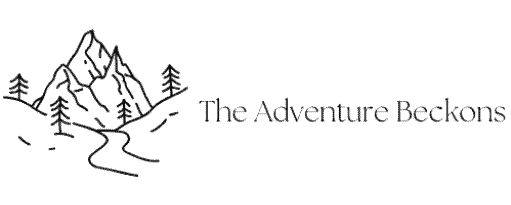Beginner’s Backpacking Gear Guide
Are you new to backpacking and looking for where to begin for gear recommendations? Then look no further than this post where I share my top backpacking gear picks. If you only need day hiking gear recommendations, start here.
1. The 10 essentials
I bring all the items covered in my 10 essentials post. I put most of them in a clear, waterproof carrying case and just leave in my day hiking bag so I don’t have to overthink it when packing.

2. Backpacking pack
I’ve been using the Osprey Ariel 70L (Canadian link here)for a few years now and love it. I previously had a 55L pack and it just wasn’t big enough.

3. Tent
The tent I currently use from REI is not available but something similar can be found by Big Agnes (Canadian link here). You want to look for a tent under 5lbs if possible.

4. Sleeping Bag
I love my REI sleeping bag (link not available) but a similar bag can be found by Big Agnes (Canadian link here). It packs down small and is super warm. Ideally you find a bag that is rated to 0 degrees, which is ideal for most climates.

5. Sleeping Pad
I upgraded my sleeping pad last year and it’s been a GAME CHANGER. I have the Therma-a-rest Neoair (Canadian link here), and I sleep so well outside now!

6. Hydration
I swear by the Platypus filtration system (Canadian link here) because it only takes a few minutes to filter 2L of water at a time.

7. Backcountry cooking
I’ve been using the Jetboil (Canadian link here) sinced I first learned about it. It heats up water to boiling in about 3 minutes, making it the fastest and most efficient cooking tool you can get for camping. You also need to buy isopropane to go with it, sold separately.

For kitchenware, I use something similar to this sea to summit cookware set which includes 2 bowls, a spork/fork and a pot. I usually just use a bowl as a mug but some people prefer separate mugs like this one.

8. Food storage
If there is bear hang available, I bring a dry bag and put all food and other smelly items in it to hang away from animals. If no bear hang is available (wild camping, certain parks) I use a bear vault (Canadian link here). While large, I can pack multiple other items in it and it serves as a seat, plus it is the industry standard. In recent years, Ursacks have become popular as they are lighter and easier to pack, however I’ve read mixed reports on their efficacy when there were bear encounters so use with caution.

9. Hiking Poles
Especially since I turned 30, I always hike with trekking poles (Canadian link here) – they really save your knees and are super useful for stream crossings and particularly going downhill.

10. Bear Spray
Living in bear country, I always carry bear spray, and I pack it either on the front of my pack (you can get a holster for it) or in my water bottle holder for quick access. I’ve run into bears a few times on the trails and it brings me peace of mind to know I have something to deter them in a worst case scenario. Definitely watch some youtube videos about how to use bear spray so you can use it appropriately. If you do ever need it, you’ll need to use it fast and without thinking too much, so be ready.

11. Hydration Pack
I tend to get dehydrated quickly, so I use a Camelbak hydration bladder to keep me drinking throughout hikes. I think the 3L size is perfect – enough for a long day hike, and you dont have to fill the entire thing if you don’t need that much water.

12. Rain Jacket
I always put a light rain jacket (Canadian link here) at the bottom of my bag. It serves many purposes – rain of course, but also if the summit is windy, you can sit on it when the ground is wet, and it’s great in an emergency.
Other clothes of note
This year I’ve been getting more into sun shirts – I love that I don’t have to apply as much sunscreen and they work will with a baseball cap to give me full sun protection.

Nice to haves
Sometimes I bring a camping chair because it just makes things so much more comfortable. Another nice to have is a Thermacell (Canadian link here) which repels bugs and mosquitos in camp.







